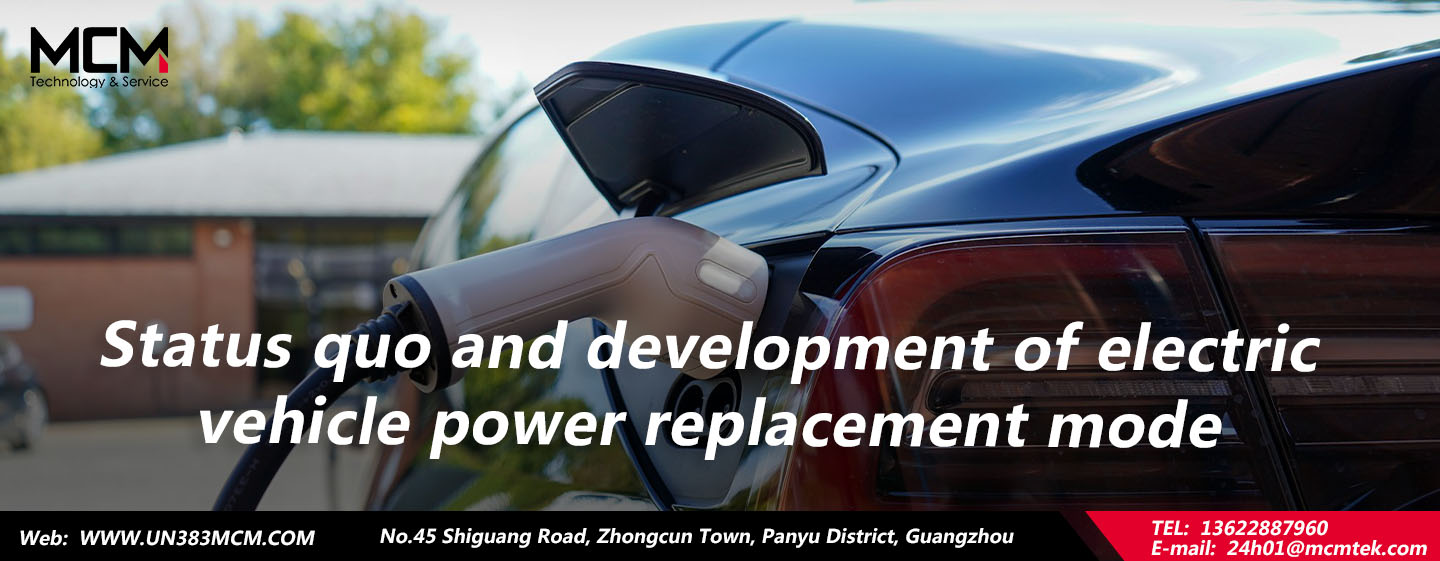Background
Electric vehicle power replacement refers to replacing the power battery to quickly replenish the power, solving the problem of slow charging speed and the limitation of charging stations. The power battery is managed by the operator in a unified manner, which helps to rationally arrange the charging power, extend the service life of the battery, and facilitate battery recycling. The Key points of Automobile Standardization Work in Year 2022 was released by the Ministry of Industry and Information Technology in March 2022, which also mentioned the requirement to accelerate the construction of charging and replacing systems and standards.
Status quo of power replacement development
At present, the power replacement mode has been widely used and promoted, and the technology has also made great progress. Some new technologies have been applied to the battery power station, such as automatic power replacement and intelligent service. Many countries and regions around the world have adopted power battery replacement technology, of which China, Japan, the United States and other countries are the most widely used. More and more battery manufacturers and car manufacturers began to join the industry, and some companies have begun to pilot and promote in practical applications.
As early as 2014, Tesla launched its own battery power replacement station, providing users with rapid battery replacement services to achieve a long road trip on the highway. So far, Tesla has established more than 20 power replacement stations in California and other places. Some Dutch companies have introduced hybrid solutions based on fast charging and battery power replacement technology for the first time. At the same time, Singapore, the United States, Sweden, Jordan and other countries and regions have developed relatively advanced and large-scale electric vehicle power replacement stations.
Several enterprises in the field of new energy vehicles that have attracted much attention in China are beginning to pay attention to and explore the commercial application of the electric vehicle power replacement model. The power replacement mode used by NIO, a well-known domestic new energy vehicle manufacturer, is a special mode, which allows the owner to replace the battery with a fully charged battery in no more than 3 minutes.
In the field of public transport, the power change mode is more common. For example, Ningde Times cooperated with Nanshan District of Shenzhen to provide 500 electric bus batteries, and built 30 power replacement stations. Jingdong has built more than 100 power replacement stations in Beijing, Shanghai, Guangzhou, Shenzhen and other cities, providing fast and convenient battery replacement services for logistics vehicles.
Application of power replacemen scheme
At this stage, the main power replacement methods on the market are chassis power replacement, front cabin/rear power replacement and side wall power replacement.
- Chassis power replacement refers to the way to remove the original battery pack from the lower part of the chassis and replace the new battery pack, which is mainly used in the fields of cars, SUV, MPV and light logistics vehicles, and is mainly used by BAIC, NIO, Tesla and so on. This scheme is easy to achieve as the battery replacement time is short and the degree of automation is high, but it needs to build a new fixed power replacement station and add new power replacement equipment.
- Front cabin/rear power replacement means that the battery pack is arranged in the front cabin/rear of the car, by opening the front cabin/trunk to remove and replace the new battery pack. This scheme is mainly used in the field of cars, currently mainly used in Lifan, SKIO and so on. This scheme does not require new power replacement equipment, and realizes power replacement through manual operation of the mechanical arms. The cost of is low, but it requires two people to work together, which takes a long time and is inefficient.
- Side wall power replacement means that the battery pack is removed from the side and replaced with a new battery pack, which is mainly used in the field of passenger cars and trucks, and is mainly used in coach. In this scheme, the battery layout is the most reasonable, but the side wall needs to be opened, which will affect the appearance of the vehicle.
Existing problems
- A wide variety of battery packs: The battery packs used in electric vehicles on the market are ternary lithium-ion batteries, lithium iron phosphate batteries, sodium-ion batteries, etc. Electric vehicle power replacement technology needs to be compatible with different kinds of battery packs.
- Difficult power matching: the battery pack of each electric vehicle is different, and the electric vehicle power replacement station needs to achieve power matching. That is, to provide each electric vehicle entering the station with a battery pack that matches the power it needs. In addition, the power station needs to be compatible with different types and brands of electric vehicles, which also poses challenges to the realization of technology and cost control.
- Safety issues: The battery pack is one of the most core components of electric vehicles, and the power replacement station of electric vehicles needs to work on the premise of ensuring the safety of the battery pack.
- High equipment cost: electric vehicle power replacement stations need to buy a large number of battery packs and replacement equipment, the cost is relatively high.
In order to give play to the advantages of power replacement technology, it is necessary to achieve the unification of battery pack parameters of various brands and various models, enhance interchangeability, and achieve universal dimensions of power battery pack, communication control, and equipment matching. Therefore, the formulation and unification of power replacement standards is one of the important factors affecting the development of future power replacement technology.
Post time: Feb-23-2024


